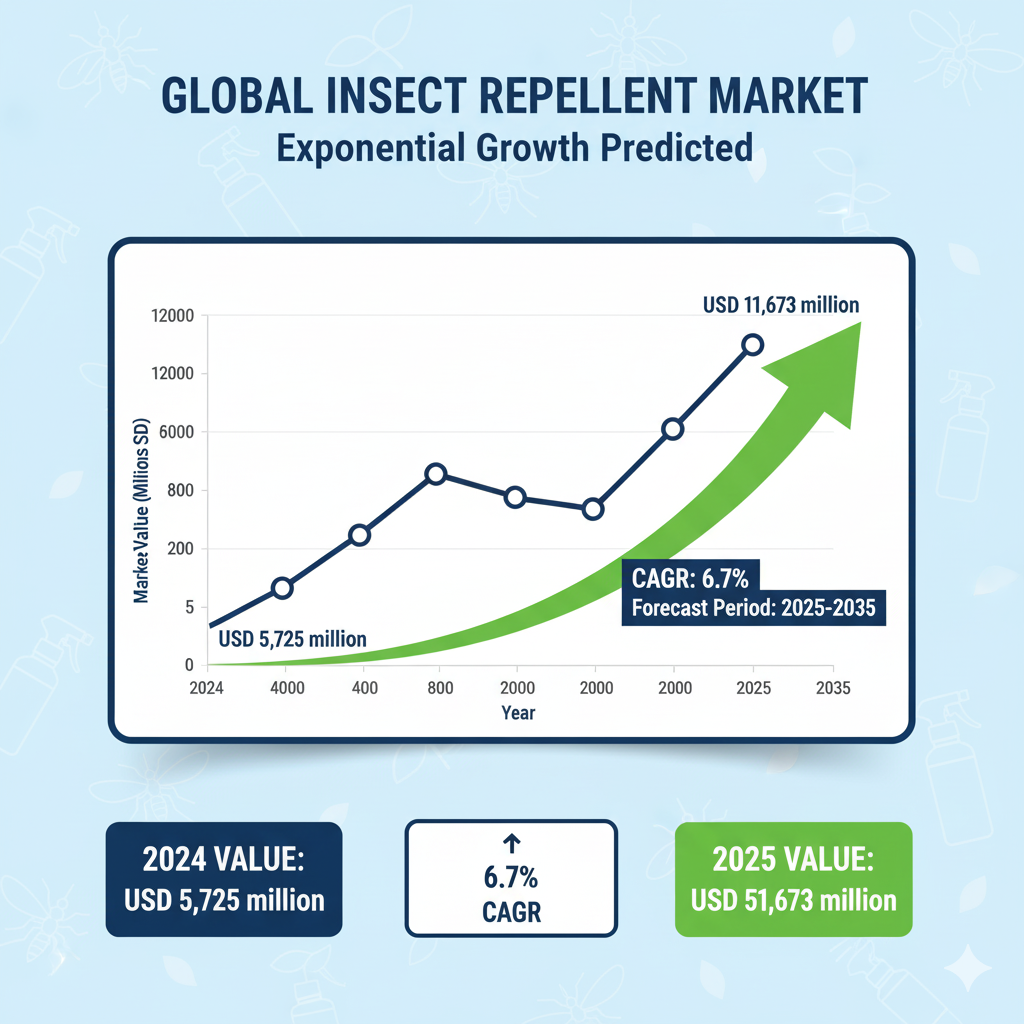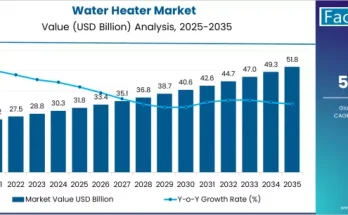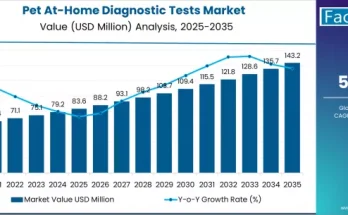The global insect repellent market is expected to reach USD 11,673 million by 2035, up from USD 5,725 million in 2024. During the forecast period (2025-2035), the industry is projected to expand at a compound annual growth rate (CAGR) of 6.7%.This growth reflects a decade-long transformation fueled by increasing climate sensitivity, the global rise in vector-borne diseases, and consumer demand for eco-conscious, health-safe repellents.
The market’s expansion underscores the critical role of preventive solutions against mosquito-, tick-, and fly-borne illnesses such as malaria, dengue, Lyme disease, and Zika. As public health priorities evolve, insect repellents are emerging not just as consumer goods, but as vital components of global disease-prevention infrastructure.
Health Awareness and Climate Dynamics Propel Growth:
The market’s accelerating demand is closely linked to rising global temperatures and shifting insect migration patterns. Regions previously unaffected by vector-borne diseases—such as parts of Europe and North America—are now reporting seasonal infestations. This climate-driven migration is spurring sustained demand for personal protection products, both in residential and outdoor-use segments.
“Climate change is redrawing the map of insect-borne disease exposure,” stated a senior analyst at Fact.MR. “As mosquitoes and ticks move into new habitats, consumer and institutional demand for long-lasting, skin-safe, and environmentally friendly repellents is surging across the globe.”
In urban and semi-urban centers, heightened awareness of dengue and malaria prevention has driven widespread adoption of sprays, roll-ons, and vaporizers, while DEET-free and botanical formulations are gaining favor among health-conscious consumers. Parallelly, the expansion of eco-tourism, outdoor sports, and recreational travel is creating lucrative opportunities for manufacturers offering convenient, durable, and multi-functional repellent solutions.
Regional Landscape: Asia-Pacific Takes the Lead, North America Innovates:
North America maintains a strong market position, driven by high consumer awareness and product innovation. The U.S. market is witnessing a clear shift toward clean-label repellents and wearable formats such as ultrasonic devices and insect-repelling bands. Increasing outdoor recreation and environmentally responsible tourism are reinforcing seasonal demand.
Europe shows sustained momentum, particularly in Germany, France, and Italy, where rising tick-borne illnesses like Lyme disease are spurring the adoption of botanical and hypoallergenic repellents. The EU’s tightening of chemical-use regulations is also steering product innovation toward biodegradable, plant-based solutions.
Asia-Pacific stands as the fastest-growing regional market, with India, China, and Indonesia experiencing strong growth. Frequent mosquito-borne disease outbreaks, combined with government-led health awareness campaigns, are enhancing product accessibility. Manufacturers are introducing low-cost repellents for rural distribution and premium herbal variants for urban centers. In India, FMCG leaders such as Godrej and Dabur are scaling nationwide distribution networks to meet surging demand in both rural and metro regions.
Meanwhile, sub-Saharan Africa and Latin America represent emerging high-potential markets, as ongoing dengue, malaria, and Zika challenges drive increased consumption of repellents supported by NGOs and global health programs.
Innovation and Product Evolution: Smart, Sustainable, and Skin-Safe:
The next decade will witness an innovation-driven transformation in repellent design. Manufacturers are shifting toward AI-enabled personalization, smart-release coatings, and biodegradable packaging that minimize skin residue and environmental impact.
Between 2025 and 2035, the industry will prioritize:
- Sustainable formulations using citronella, eucalyptus, and lemon oil as core ingredients.
- Smart textiles infused with insect-repelling technologies for outdoor apparel.
- Refillable and zero-waste packaging systems aligned with global sustainability mandates.
- Localized supply chains supported by vertical farming of botanicals and AI-led inventory forecasting.
These advancements are positioning the insect repellent sector at the crossroads of green chemistry, health safety, and digital intelligence.
Key Companies and Competitive Landscape:
Prominent market participants include Avon Products Inc., Dabur India, ExOfficio LLC, Godrej Consumer Products, Homs LLC, Jyothy Labs Limited, Reckitt Benckiser, Johnson & Johnson, SC Johnson & Sons, and Spectrum Brand Holding.
- Avon continues to lead in skin-friendly repellents under its “Skin So Soft” line, combining beauty care with insect protection.
- Godrej dominates India’s household repellent market with Goodknight and HIT, introducing innovations like AQ500 — India’s first indigenous mosquito repellent molecule.
- SC Johnson, with brands OFF! and Raid, remains a global leader investing in green packaging and bio-based repellents.
- ExOfficio integrates insect repellent technologies directly into fabrics through its Insect Shield® apparel line.
- Dabur and Homs LLC focus on herbal and essential oil-based repellents, targeting safety-conscious families.
R&D investments are surging in long-lasting, DEET-free, and dermatologically tested formulations. Moreover, rising premiumization is turning repellents into multi-benefit skincare and wellness products, expanding margins and customer retention rates.
Recent Developments:
- June 2025 – Arkus (NC State startup) launched EcoArmor™, a DEET-free, plant-based repellent offering broad-spectrum protection.
- July 2024 – Godrej Consumer Products introduced AQ500, a novel mosquito repellent molecule with enhanced safety and efficacy.
- May 2024 – Royal Robbins unveiled Bug Barrier™ apparel featuring embedded mosquito protection, catering to eco-conscious adventurers.
These innovations illustrate the sector’s growing convergence of science, sustainability, and lifestyle appeal.
Fact.MR Research Methodology:
The findings are derived from 12,300 stakeholder responses across 39 countries, with 66% representing manufacturers and end users from health, FMCG, and outdoor industries. Insights were validated using over 310 data sources, including patents, financial disclosures, and scientific literature, ensuring comprehensive coverage of the market’s evolving dynamics.
Outlook: The Next Generation of Insect Protection:
Between 2025 and 2035, the insect repellent market will transition toward tech-integrated, eco-conscious, and consumer-personalized products. Manufacturers who align their portfolios with sustainability, digital innovation, and global health resilience will emerge as leaders.
As Fact.MR’s report concludes, “Insect repellents are evolving from seasonal essentials to lifestyle-driven health technologies — bridging the gap between personal wellness and environmental responsibility.”
For manufacturers and investors, this decade presents a strategic opportunity to shape the future of personal protection through sustainable innovation and scalable market engagement.
Browse Full Report –https://www.factmr.com/report/insect-repellent-market



